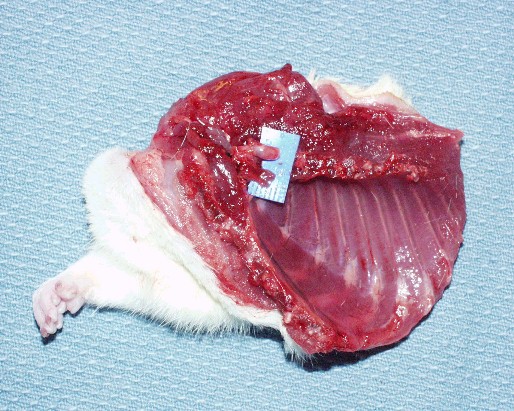Room 2 (Henry B. Gonzalez Convention Center)
Sunday, November 3, 2002
8:00 AM - 4:00 PM
Room 2 (Henry B. Gonzalez Convention Center)
Monday, November 4, 2002
8:00 AM - 4:00 PM
Room 2 (Henry B. Gonzalez Convention Center)
Tuesday, November 5, 2002
8:00 AM - 4:00 PM
Room 2 (Henry B. Gonzalez Convention Center)
Wednesday, November 6, 2002
8:00 AM - 4:00 PM
896
P14 - Content of Bone Marrow in the Rat Bones and Planning of Flaps for Experimental Vascularized Bone Marrow Transplantation
The search for Tolerance in transplantation is highlighting the importance of Bone Marrow which is highly immunogenic, may contribute to occurrence of rejection, may induce haematological chimerism (and possibly tolerance) or may be responsible for a lethal Graft-versus-Host Disease. The aim of this anatomical study was to evaluate the content of bone marrow in the various bones of the rat and to identify the corresponding flaps for their possible use in the study of vascularized bone marrow transplantation, comparing them to the rat hindlimb, one of the most popular models for the study of composite tissue transplantation. Materials and methods: thirty rats (Sprague Dawley, Simonsen Lab. Inc.) were used, in a two-part study. In the first part, bones were mechanically cleaned of the soft tissues, fixed in buffered formalin for 48 hours, decalcified in a mixture of formic acid and calcium chelants for further 48 hours, and then were processed in different ways for bone marrow extraction and weighing (±1 mgr), assessment of volume (± 10ml) or assessment of cellularity on Hematoxylin-Eosin stained sections, blindly performed with assessment of the ratio of viable bone marrow to fat degenerated marrow. In the second part, we performed an anatomical study of the vascular pedicles and corresponding microvascular flaps, including vascular injection with latex and lead-oxide, x-rays and experimental in vivo transplantation (anaesthesia: Sodium Pentobarbital 30-50 mg/Kg i.p) when indicated. Results and discussion: Figures for volume and weight slightly differed between different bones, consistently with a different density and cellularity. As a general rule, cellularity showed a centripetal distribution, higher in axial skeleton and very little bone marrow could be found distally to the wrist or ankle with few nests of bone marrow sparse in the carpal bones and in the phalanxes. A dominant vascular pedicle is present in most bones, with few exceptions like the humerus, and we describe the microvascular transplant of a whole hemitorax (see Fig.) and of the cranial vault. Only few flaps appear truly useful as experimental models. The hindlimb, including a modification developed by us with the removal of most of the bone marrow, is probably still the best flap for the study of vascularized bone marrow or composite tissue transplantation.

View Synopsis (.doc format, 266.0 kb)
See more of Posters
Back to 2002 Complete Scientific Program
Back to 2002 Meeting home
